At Dove’s 20th anniversary event for Real Beauty, which I was invited to attend in New York City last month, the personal care brand reinforced its two-decade long commitment to portray women who reflect “real” beauty of all types. But this year and beyond, Dove is also committing to never using generative AI to “replace or distort images of women.” Complementing that announcement is the launch of the Real Beauty Prompt Playbook that generative AI users of all kinds can leverage as a guide. The Playbook focuses on image generation involving beauty, but its principles could be applied to other industries, too.
The History of the Real Beauty Campaign

DOVE MARKS 20 YEARS OF REAL BEAUTY WITH A RENEWED COMMITMENT TO ‘REAL’ AND PLEDGE TO NEVER USE AI TO REPRESENT REAL WOMEN IN ITS ADVERTISING (CNW Group/Dove Canada)
One of the most impactful advertising campaigns you may have seen in the last 20 years is Dove’s Real Beauty campaign. It flipped the traditional beauty industry on its head, promoting “real” women of different ages, races, and body types versus classically thin and beautiful models. The campaign was developed in response to the industry being flooded with Photoshopped, airbrushed, and re-touched images of women, which threatens self-esteem and presents unrealistic portrayals of what it means to be beautiful.
Today, those threats have become amplified through technologies like social media digital filters and, most pressing, generative AI. Generative AI images present literally unrealistic depictions of beauty because the photos of women that are produced from basic prompts don’t actually exist. With a simple text or voice-based prompt using a generative AI program like DALL E, Midjourney, or Stable Diffusion, anyone can create an image of a beautiful woman, a woman with perfect skin, or a woman who has the best body. But what does this look like? AI processes the wealth of information on the internet to determine its results and present images it believes represents what you are looking to see. But it’s effectively a mirror of what the internet tells people you should see.
Inherent bias on the internet reinforces unrealistic beauty standards perpetuated by sources like the media, fashion and beauty magazines, Hollywood, influencers, video games, filtered and Photoshopped images, and more.
The Bulimia Project’s 2023 Scrolling Into Bias: Social Media’s Effect on AI Art report tested this theory and found that GenAI tools showed women with blonde hair 37% of the time, brown eyes 30% of the time, and olive skin 53% of the time. The definition of a perfect body tends to be thin with a small waist yet also curvy: an impossible feat for most.
How the Dove Real Beauty Prompt Playbook Works
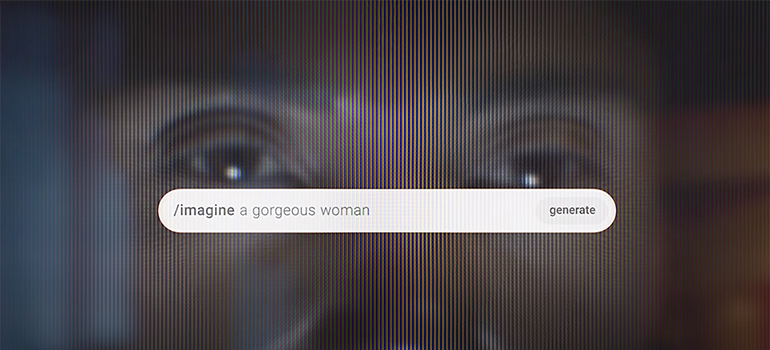
The Dove Real Beauty Prompt Playbook, devised in collaboration with AI experts (access it by scrolling to the Download button on this page) provides tips and tricks for those using GenAI platforms to help them yield more realistic results. This isn’t just for business professionals: people who use GenAI tools include graphic designers, video game designers, moms, even curious and creative teens. The Playbook teaches you how to add more context to prompts. AI can only provide from its datasets what it knows to relate to your query. It can, however, understand context if you give it more information to work with.
When it comes to beauty, Dove suggests dividing descriptive terms into categories like age, race, ethnicity, gender & gender expression, skin, body, head, and clothing & accessories, then grabbing from these categories to make your prompt more specific, thus forcing to AI to bypass its biases.
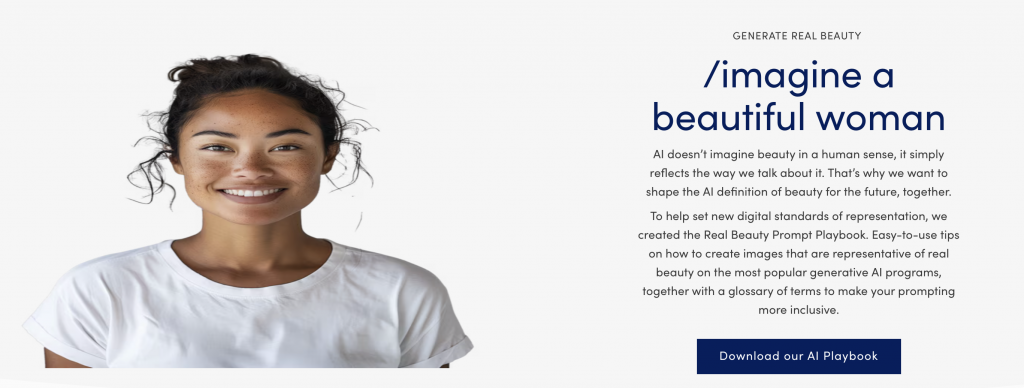
For example, instead of prompting “create an image of a beautiful woman,” say “create an image of a beautiful, middle-aged woman with wrinkles wearing a headscarf.” Instead of prompting “create an image of a woman with perfect skin,” change the prompt to “create an image of a beautiful, non-binary, androgynous woman with perfect skin and freckles.”
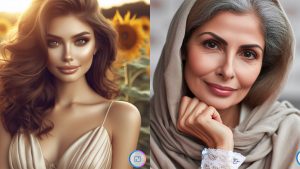
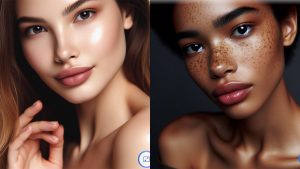
Rather than ask the GenAI to create an image of a “woman with the best body,” ask for it to create an “image of a beautiful heavy-set Black woman.”
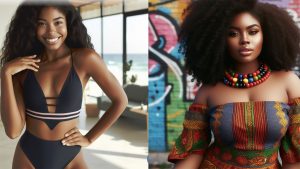
I tried this out using Microsoft Copilot (powered by DALL-E 3) and you can see the comparisons in the images generated based on which prompt I typed. The image on the left in each pair depicts the generic prompt and the one on the right is the result with the more descriptive one, using Dove’s guidelines.
The idea is to alter the narrative. We can’t change the trillions of bits of data that exist on the internet from which AI pulls its knowledge. But we can train ourselves not to fall victim to its biases.
How Inherent AI Bias Affects Other Industries
The inherent bias people experience when using AI tools in the beauty industry doesn’t exist in a silo. It is a reality across every industry when being used not only to create information, be it images or query responses, but also when compiling data or analyzing content.
One of the areas where AI bias is being questioned is in hiring practices. Many companies use AI to help them filter through hundreds, maybe thousands, of resumes for a job opening. AI purports to narrow the field down to the most suitable candidates using predictive analysis and machine learning. But bias based on race, experience, gender, and other factors is rampant, and plays into the decision-making process. Consider a position that might typically be held by a man. Because of this, AI will determine that male applicants are best suited for it, which isn’t necessarily the case. This could weed out quality female applicants with more experience.
If lessons from Dove’s Real Beauty Prompt Playbook were to carry over to this space, it could mean specifying factors that should not impact the narrowing down of applicants, like race or gender. Even still, AI will have a difficult time spotting those hidden gems and subtle nuances of a resume or cover letter that make a particular candidate stand out.
Most recently, AI biases have come to light in healthcare as well. With many published medical studies on the internet, users can ask AI like ChatGPT medical-related questions and get results that are seemingly based in fact. But without a full story, context, and assurances of where the information is being gathered from, you aren’t always getting the full picture. Imagine trying to source information about how you should change your diet: there are so many conflicting nutritional studies online, and so many other factors to consider, that it’s virtually impossible for AI to present information that will be accurate for you.
A recent study in the Journal of the American Medical Association (JAMA) found that AI-generated drafts from physicians to their patients had so many inaccuracies, it did not save them time as expected. In fact, it increased the amount of time they spent by 22% because they had to spend more time reading and editing the AI-generated text than if they had written it themselves. Changing prompts in this respect might require providing more detail about each patient’s individual situation. But even then, finding the right prompts may negate the need for AI in the first place.
What Can We Learn From Dove?
Dove’s messaging with the Real Beauty Prompt Playbook is clear: the internet is full of inherent bias, and to promote inclusivity, it’s up to humans using AI tools to adjust the way they use them to try and avoid the bias. Consider it in the same way you’d only read news from trusted sources and verify purported facts or photos before taking them at face value.
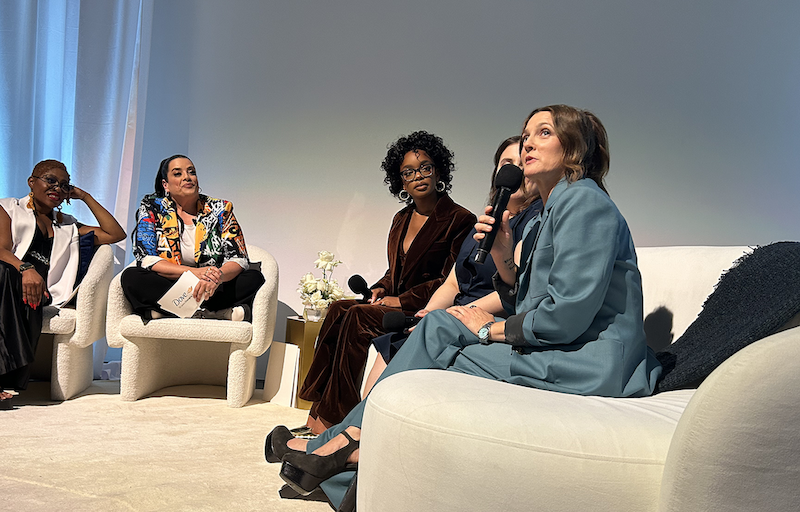
AI isn’t the enemy. It’s here to stay. “What I see Dove did is everything we are trying to do for ourselves, which is fight off societal narratives and creative one of our own,” said actor Drew Barrymore at the event, one of several celebrities in attendance to support the commitment to Real Beauty.
“I hope that with the embracing of AI,” Kathryn Holl Fernandez, Senior Director, Dove North America told us in a private interview at the event, “everyone makes sure there’s enough diversity and representation, even if the images aren’t real.”
This message is important beyond just the beauty industry, and beyond just AI image generation. When using AI for hiring, producing content, analyzing text, developing presentations, even helping diagnose illnesses or ailments, biases needed to be stripped from the results. How to accomplish this will vary across the board and might not even be entirely possible. But Dove is taking one step to help in the beauty space. The company is showing that while we can recognize that AI isn’t going away, we should also be cognizant of the fact that we should be training it and not the other way around.
– 30 –
More articles on AI

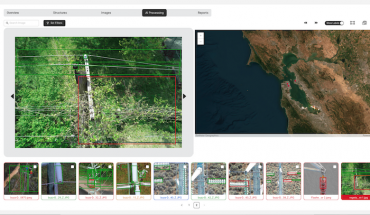

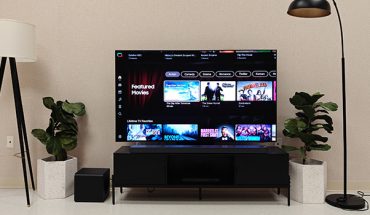
Thanks for sharing! This article was really informative and well-written. I enjoyed reading it and learned a lot. Keep up the great work!
Located in the heart of Canada’s dynamic tech scene, Asapp Studio stands as a top-tier software development firm. Specializing in app (IOS & ANDROID) solutions and Full stack web development, web development (MERN Stack), they are at the forefront of digital innovation. Their dedicated team creates customized solutions for businesses of all sizes, blending creativity with technical expertise. Ready to enhance your online presence? Begin your digital transformation journey today at http://www.asappstudio.com